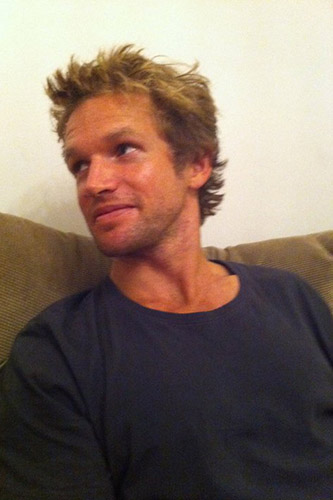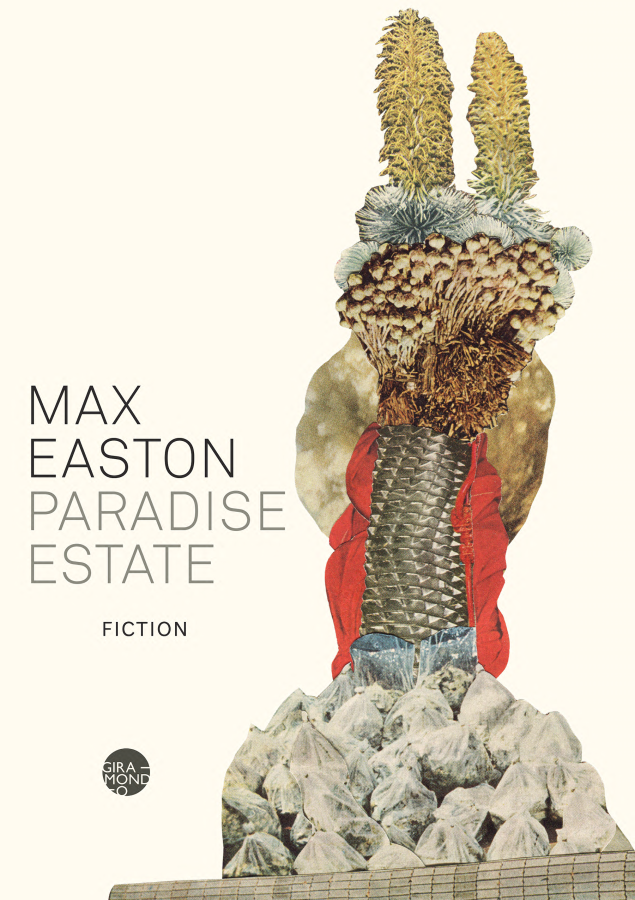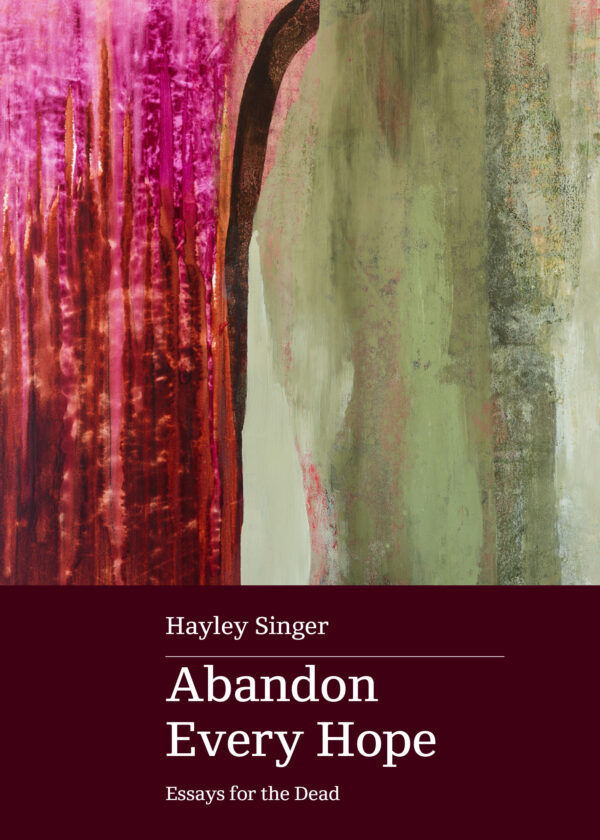The car helped enable the suburb to become a widespread landscape format, thereby blurring the previously discrete conceptions of the town and the country. Portable computing technology is having comparable, if yet-to-crystallise effects on the places people live, play and work. Particularly those of us engaged in the so called knowledge economy. We already have the neologism ‘coffice’, a designation that names the practice of people adapting cafes for the purpose of work. But this is just one example of a place—or really two places—being remade through the affordances of mobile computing. The home/office binary is a relatively crude rendering in comparison.
While the scale and quality of such technologically oriented changes to human practices are often riven with misapprehension, I cannot help but consider—from my privileged vantage in a picnic hut overlooking Bronte beach—that the modern office is an artefact from a time when work needed to be conducted in a different manner and atmosphere, and that now, unlocked from the brightly-lit, uncomfortable, stifling, energy-intensive, disease spreading, anxiety-inducing structures in which work commonly took place over the last century, we ought to start thinking very differently about what a place of work might be. It is easy to see the backwardness of brutal, smoke-filled nineteenth and early twentieth-century factories. Perhaps in the latter parts of the twenty-first century, the modern office and its associated scenography will appear similarly dated?
I belong to a fortunate demographic who is able to enjoy both security and flexibility in my occupation. As an academic, my work is made up of a combination of teaching, research and administrative duties. A fair portion of my day involves responding to internal emails, reading and writing for research, assessing student applications, marking and curriculum development, and various online acrobatics associated with different digital administrative systems. Much of this can be executed through the little, illuminated portal of my computer screen. There is no need for such antisocial behaviour to take place in the often similarly antisocial confines of an office.
So instead of the office, I choose parks, at least for some portion of the day. I’m a regular inhabitant of Bronte Park, in the early morning, where I enjoy the shelter and the thick cement tables in the picnic huts and the incomparable brain refreshment of a dip in the ocean. Later in the day, I take up residence in Prince Alfred Park, which is close enough to my place of work for my fleshy form to manifest in the corridors in a matter of minutes. These adapted office-parks suggest vast spectrum of working spaces where leisure and labour mix in new ways. While the steady diffusion of work into previously foreign realms isn’t always a laudatory phenomenon, in this little speculative adventure, I’m going to focus on some of the more positive possibilities in part afforded by our digital possibles.
I scan the ground in Prince Alfred Park, making calculations based on gradient, shade and, to a lesser extent, the quality of the grass. The landscape I observe is completely different to the range of support structures for the human body that are commonly found in offices. In my work office, the chair is a discrete object, clearly identifiable from the context in which it is placed. It goes together with the desk, the height of which is synchronised with the chair. My office has been made explicit. The air is conditioned. The building affords shade from overhead sunlight. Everything has been prepared.
In the park, however, I must work to distinguish my chair from its surrounds. Here my office is implicit. There is a range of sloped, shaded areas where I can comfortably lie down on my back, prop my laptop up on my knees and work. The slope and the shade are both important: no shade and the screen is hard to see and the sun hurts my eyes; no slope and the flat ground requires that I have to prop my neck up at a sharp angle to see the screen and work the keyboard. Ideally, the area of grass I find is lush and thick enough to protect me from smudges of dirt, though not so long that it encourages the presence of insects who bite the soft, sensitive skin that is characteristic of my species.
In this particular park office, there is no table and chair, just a comparatively vast, undulating surface into which I temporarily fit my body and its computing appendage. I imagine a similar park dotted with deliberate impressions in the shape of the human form, little ergonomic ditches, each with its own tree which throws a bobble of shade over the moulded ground. I imagine different configurations of these ditches, some are isolated, some are connected in small, radial forms. Bodies slot into these ditches, they fold themselves down into the earth in a posture that is appropriate for an interfacial relationship with a screen.
The longer I stay lying on the grass to work, the further my possessions seem to spread out around me. It’s as though the force of gravity is gradually realising its impact and causing my things to disperse. I bring my knees up towards my chest and chock my laptop in between my torso and my thighs. My arms are folded in close to my body and my hands hang over the keyboard, a little like the front paws of a kangaroo. I imagine a plein air painter, perhaps Marie Mansfield, working on another painting for her captivating series depicting the bodies of sprawled office workers in parks in the city. The details of my posture are crucial: my semi-formal office clothes; the internal tension of my posture, with the suggestion of lassitude evoked by a splayed limb; the contrasting sense of a body at once exposed in open space and yet immersed, not in the physical space as such, but in the microworld formed between mind and screen.
I can’t bring myself to lie down while inside at work. An invisible but active barrier exists that requires I stand or sit. The chairs and tables and the observed norms of my colleagues induce a reasonably strong sense that lying down in the workplace would demand an explanation that I’m yet to perfect.
While standing and writing is increasingly common, and walking meetings are a growing trend, lying down to write or to talk in the office remains transgressive behaviour. A horizontal posture still signals leisure, nonchalance, a lack of willingness to perform.
Despite being an unusual spot to work, I am happy standing with my laptop at a cement ledge in an old, disused industrial goods line adjacent to the university campus. Sometimes I stand and spread out my things on one of the cement ping pong tables in a small outdoor area near the so-called alumni green. The large, flat, waist-high surface is a relatively unique outdoor affordance in the context of the university campus. There are a few trees nearby under which I occasionally lie under with my laptop, head propped up with a surprisingly comfortable, makeshift pillow composed from my backpack and a cup wedged underneath the back of my skull. On the other side of the alumni green there is a small, grassy slope with a rare bit of shade that are often occupied by groups of students. It seems two metres distance between groups roughly sets the limits of etiquette with regard to personal space. I observe from the ping pong tables and make a move when a portion of grass becomes free.
Lying down and working remains very much an outdoor activity, more or less restricted exclusively to parks and green space. A supine body and a patch of grass seem to go together. In other public spaces, reclining is often treated as an improper sedentary practice. Recently I adopted my horizontal writing posture on a park bench to enjoy the ambivalent ambience of Henry Deane Plaza, just near Railway Square in Sydney. Before long, a tap on the shoulder burst the bubble that had formed between me and the screen. A security guard in dark clothes temporarily shaded my face from the sun. Apparently, sitting or standing was mandatory. My horizontal form was taking up too much room on the bench. I observed the three other empty benches and the largely deserted plaza in disbelief and moved on, hoping the lawn on alumni green might be free.
In the heat of the increasingly long summer, the park is often too hot. I’m tempted, occasionally, by the giant, cool edifice of Central Station not far from my office. I enjoy working in places of transit, the regular flows of people and the anonymity seem to induce the levity that comes with the romance of travel. But once I move inside the zone of the building, I no longer feel comfortable lying down on the ground. The atmosphere does not invite it. Even sitting in the space is a challenge. There are no public tables, and the few benches are hard and typically occupied. While one of the new cafes offers an appealing ambience in which to work, I typically have my own food and thermos in my backpack with which I am reluctant to part. I once asked in the cafe how much I would have to pay simply to use one of the tables. I told the staff that I’d be happy to pay the price of a coffee and a muffin to sit there and eat my own food. Unsurprisingly, they refused on the grounds of health and safety. Though a woman working there subsequently suggested that if I used one of the tables around the back, out of view, it would be OK. These tables, however, were in a dull little nook with no sense of the station atmosphere and its invitingly open, energised space. I sat out the front of the station on a thin strip of sloping grass under the shade of a tree instead.
I overhear another occupant of a Bronte Picnic hut talk about how he’d started doing billable work from down at the beach. He is one of a group of three or four men who I see in the huts every morning. Their push bikes, clothes and water sports apparatus make the segment of the hut they occupy appear like the veranda of a well-lived-in home. Sometimes I get distracted listening to the conversation of these improvised colleagues. I hear of trips to Queenstown in New Zealand, of oyster preferences and of theories about how light projection works. One man has two dogs, a little chihuahua that he cradles in this arm and a larger, golden dog, who he is often telling off for bothering other people in the huts in search of food. I have built a sort of distant camaraderie with these men. Together we consistently exclaim that the water is beautiful, even on the most threatening and choppy days. Occasionally I see different people at work in the huts: a woman with a laptop who smiles at me after my swim, a man with a straw hat and newspaper spread over the table, an older couple with an elaborate kit for making health drinks.
The pigeons have cottoned on to my routine and they emerge not long after I arrive to peck the scraps of pastry from the ground beneath the table. Initially the presence of their feathered bodies networking in between my feet made me uncomfortable and I would kick and shoo them away. With time, however, we have become better acquainted with each other and now on the mornings they don’t come I am sad and wonder where they are. The ibis too, patrol the ground, half-heartedly pecking the earth while training an eye on the crumpled paper bags that litter the table. Sometimes a magpie will come, always a little more timid than the other birds. It will point its beak upwards, skewering my gaze, and swivel its head slowly from side-to-side so I can see its orange-brown eyes, then erupt into piercingly beautiful song. I miss my animal friends in the corridors at work and it strikes me—in the speculative space this page allows me to conjure—how strange it is that we have banished other creatures from the places us city folk choose to labour.
The city office has to a significant degree been shaped by the towering, vertically-oriented buildings in the CBD, which allow many people to be cluster in the one area. But as that need to some extent diminishes, different places of work suggest themselves as emergent forms in the landscape. I imagine the great, empty stadiums around the city filling with fellow travellers during the day, who come in search of shaded seating, basic amenities, recreational green space and a sense of occasion to enjoy while attending to emails.
Clusters of yet to be realised offices and places of revivification might compose our daily trajectories around the city. The work office and the home remain orienting forces, but increasing numbers of outdoor offices emerge in the zones of land in between and around these key destinations.
Occasionally I take the train from Central to Kings Cross and walk to Reg Bartley Oval at Rushcutters Bay, where the modest, shaded grandstand overlooking the sporting field and the harbour is a perfect vision of the city. There is an outdoor fitness gym nearby, and, of course, the oval, should I wish to exercise on a break. Not far away is Trumper Park, which features the same combination of accessibility from the station, a grandstand with seating and shade, toilets, recreational space, and a picturesque backdrop—this time bushland.
Frustratingly, Apple have already tarnished my vision and labeled their massive new headquarters in California, Apple Park. Rather than the rectilinear, high-rise icon of the twentieth century, the radial form of the stadium and the spaceship are the more conspicuous precedents for the structure. As the name suggests, however, more than anything else, it is an office that has the aspirations of park, where outdoor recreation and leisure in green space are valued as much as labouring away indoors.
Whether such aspirations are realised in the everyday practices and working conditions of its occupants are another matter, and indeed, one can imagine a tortuous situation where flogged workers remain in a state of endless yearning, the green interior garden a little dream of recreation, like the hastily purchased, rarely used, sporting apparatuses that clutter the garages of the perpetually busy. The office workers in Apple Park might be simultaneously tempted by and deprived of luxuriant green and fresh air while working non-stop throughout the day.
The future park-office I have in mind is a related yet contrasting vision to that of Apple Park. It involves vernacular adaptations of existing landscape features and minor, though precise elements of urban infrastructure, such as power points, comfortable and durable outdoor furniture, rudimentary sheltered areas, and, most importantly, lots of trees. Rather than remaining beholden to the residual temptations of gathering in an indoor office, coworkers might strike out together on little expeditions into such park offices and gradually find themselves acting in subtly different ways and feeling differently about their work. The look and feel of our parks will also change in the process. Like the crowds of fitness enthusiasts and personal training collectives, these computer augmented, mobile knowledge workers will be an increasingly common sights in our parks. A new conversational tone might emerge from the sprawled bodies, who are inhibited and enabled in certain ways by their vegetative posture and the indirect communicative relations it affords.
The modernist visions of co-isolated living in the twentieth century were in part inspired by the architecture of medieval monasteries. One of the greatest contributors to this collective imagining was Le Corbusier, who saw a perfect architectural image expressed in the Charterhouse of Ema at Galluzzo, a Cistercian monastery, where each inhabitant had his own, self-contained cell. Impractical romanticisations of the past have their limitations in a plainly different contemporary context. However, if European architects can turn to medieval monks for inspiration, then perhaps we in Australia ought look to the anthropological history of our landscape for ideal visions for living, remembering it was enjoyed as a beautifully and functionally designed space for outdoor living for tens of thousands of years by Indigenous Australians. Sadly, its stories may be less readily accessible, but as architects and landscape architects who are sensitive to climate, culture and landscape continue to demonstrate, the longer story of our landscape still persists, waiting for us to find our place in within it, should we listen and look in a manner that deserves an invitation. It might seem as though we’ve already come a long way in this regard, with some clever developments in the way landscapes and interiors are integrated in functional, aesthetically pleasing spaces. However, as I watch an old, sun-leathered man carefully fix his towel to a steel fence by the beach with clothes pegs he brings each day specifically for this purpose—I think, perhaps we are only at the tip of an iceberg when it comes to changing the mix of the inside and the outside in the places we live, work and play.

We are grateful to the City of Sydney for funding to commission and publish this essay.


